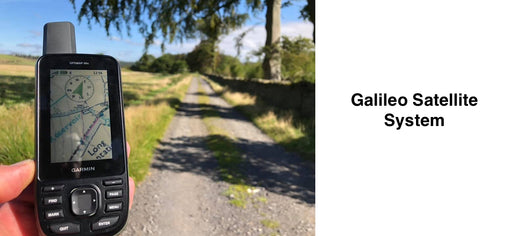
European Galileo Satellite System
Share
On 25 July 2018, the European Space Agency launched the last four satellites for the European Galileo satellite navigation system. The European Galileo satellite system comprises 24 satellites in total and took 13 years to get in place. The launch of the first satellites began in 2005.
Overview of the European Galileo Satellite System
Introduction
The Galileo satellite system is Europe's flagship global navigation satellite system (GNSS), designed to provide high-precision positioning, navigation, and timing services worldwide. Developed and operated by the European Union through the European Space Agency (ESA) and the European Union Agency for the Space Programme (EUSPA), Galileo is Europe's answer to other GNSS systems like the United States' GPS, Russia's GLONASS, and China's BeiDou.Development and Objectives
The development of Galileo began in the late 1990s as a strategic initiative to ensure Europe’s independence in satellite navigation technology. Unlike GPS and GLONASS, which are military-run systems with civilian capabilities, Galileo is a purely civilian system, with the goal of providing precise navigation for various civilian, commercial, and governmental applications.
The key objectives of the Galileo system include:
- Ensuring European independence in satellite navigation.
- Offering highly accurate, reliable, and globally available positioning services.
- Supporting European industries in developing GNSS applications.
System Components
The Galileo system consists of three main segments:
1. Space Segment:
- The space segment includes a constellation of 30 satellites in medium Earth orbit (MEO), positioned at approximately 23,222 kilometers altitude.
- These satellites are arranged in three orbital planes to provide global coverage.
2. Ground Segment:
- The ground segment consists of control centers, telemetry, tracking and command (TT&C) stations, and uplink stations spread across the globe.
- It ensures the management of satellite operations, orbit control, and signal integrity monitoring.
3. User Segment:
- This includes GNSS receivers used by individuals, businesses, and governmental entities to access Galileo’s services.
Key Features
- High Accuracy: Galileo provides positioning accuracy of up to 1 meter for public services and even greater precision for authorized users.
- Dual Frequencies: The system offers free access to dual-frequency signals, improving accuracy and robustness.
- Open Service (OS): A free-to-use service designed for mass-market applications.
- High Accuracy Service (HAS): Available to commercial users for enhanced positioning accuracy.
- Public Regulated Service (PRS): An encrypted service designed for governmental and authorised users, ensuring robustness in sensitive applications.
Applications
Galileo supports a wide range of applications across different sectors:
- Navigation: Enhances navigation for the outdoors (GPS units and watches) aviation, maritime, rail, and road transport.
- Emergency Services: Provides accurate positioning for search and rescue operations, including an innovative Return Link Service (RLS) that confirms distress signals have been received.
- Agriculture: Enables precision farming techniques to optimize yields and reduce resource use.
- Telecommunications: Synchronises networks for seamless communication.
- Energy: Assists in monitoring and controlling energy grids.
Current Status and Future Plans
As of now, Galileo’s constellation is fully operational, providing global coverage with 24 operational satellites and six additional in-orbit spares. The system continues to evolve with technological upgrades and additional satellites to enhance coverage, reliability, and services.
Future plans include:
- Deployment of second-generation satellites with advanced features such as higher power signals and enhanced security.
- Increased collaboration with other GNSS providers to improve interoperability.
Conclusion
The Galileo satellite system represents a monumental achievement for Europe, establishing itself as a leader in satellite navigation technology. By offering highly accurate, reliable, and innovative services, Galileo not only supports diverse applications across industries but also strengthens Europe’s strategic autonomy in the increasingly vital domain of GNSS.

